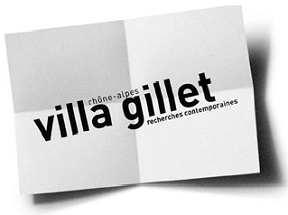Kate Colquhoun on the blurred boundaries between fiction and non-fiction
![[title-image]1332154739776[/title-image] tous droits réservés](https://cle.ens-lyon.fr/anglais/images/colquhoun_1347351196569.jpg/image_preview) Kate Colquhoun is the author The Thrifty Cookbook, a history of food and cooking. She also wrote A Thing in Disguise: a biography of the architect Joseph Paxton which was shortlisted for the Duff Cooper Prize. Her most recent book, Mr Briggs' Hat was shortlisted for Crime Writers Association Dagger Award for Non-Fiction 2011. She writes for the Daily Telegraph and contributes to many other publications.
Kate Colquhoun is the author The Thrifty Cookbook, a history of food and cooking. She also wrote A Thing in Disguise: a biography of the architect Joseph Paxton which was shortlisted for the Duff Cooper Prize. Her most recent book, Mr Briggs' Hat was shortlisted for Crime Writers Association Dagger Award for Non-Fiction 2011. She writes for the Daily Telegraph and contributes to many other publications.
Les éditions Christian Bourgois publieront en novembre 2012 un recueil en français des textes écrits à l'occasion des assises du roman.
Truman Capote called his 1966 book In Cold Blood the first non-fiction novel. Since then, the boundaries between fiction and non-fiction have become increasingly blurred.
Are these false definitions? At least we could say that novelists are able to articulate the internal worlds – the thoughts and feelings – of their characters while non-fiction relies entirely on evidence.
So Capote – along with others including Mailer, Summerscale and so on – could not invent motives for their murderers (however psychologically plausible or historically accurate). Instead, historians must find a way to accommodate the unknowable within their texts. Yes, we can speculate. But our guesses must both be born of the known facts and be held apart within the narrative.
Of course historians are not alone in relying on fact to inform their work. Zola’s La Bete Humaine, for example, arose from the notorious slaying of Judge Poinsot on a Paris-bound train in 1860. So, yes, research is a necessary part of writing for many novelists. For all historians, however, it is the only route to the re-memberance of people and the painstaking re-enactment of events.
Equally, historians use fictional techniques such as the manipulation of pace and viewpoint, and lingering description of place. At best, then, can we say that non-fiction representations of brutal crime are no less involving than novels? Think how Capote captures the soft whispery rush of Perry Smith’s voice or how Summerscale negotiates the difficulty of a young girl soundlessly lifting her half-sibling through the garden window in the dead of night.
Let us agree, then, on the blurry line between fact and fiction. So, in the depiction of ‘true evil’, are our responsibilities also similar? It is a timely question: we are enjoying another ‘golden age’ of crime writing: fictional and not, book-based as well as for film and tv. Yet violent crime figures are generally falling. Perhaps we should first ask what drives our interest in the forensics of murder?
Titillation plays its part. Some argue that we only delight in crime during periods of relative public safety. I would add that we need to be frightened in comfort of our armchairs in order to reassure ourselves that we are safe. The murder of ‘everyman’ or ‘everywoman’ – pricks endlessly at the horrible fear that our own existence could be plunged into a similar hell without warning. When the victim could have been one of us but was not we take comfort in this fact: that it happened to someone else. I believe that in anxious times – particularly those of rapid social and technological change – we hunger for stories that appear to prove that we are remote from danger.
To return to the key question: do novelists and non-fiction writers shoulder different responsibilities? Despite overlaps between the genres, there is another crucial difference. Originally, crime novels concluded with satisfying resolutions, allowing belief in the preternatural infallibility of the detective. We still delight in the swift ability to solve puzzles, re-impose order and deliver the illusion (at least) of certainty although modern crime fiction allows more loose ends than in the past, allows the fear to linger longer, you might say.
Non-fiction, of course, can also satisfy with order. Killers are caught and they are either punished – often irreversibly – or redeemed, but true crime just as often illustrates the absolute reality that it is impossible to get at the whole truth. It shows that motives can remain shrouded and that brutality can wear the face of mildness: that it is often random, unpredictable and can slink away on silent feet.
Thus, by acting as a lens through which to view society, non-fiction often raises as many questions as it answers. This is where the historian’s responsibilities perhaps diverge from the novelist’s. Mr Briggs’ Hat is a conscious blend of rigorous history, journalism and literature. Beyond those choices about technique, though, there lies a demanding axiom. To my mind, if narrative history fails to reveal anything useful about the society it reflects or to make connections to the present – in other words, to be more than the sum of its parts – then it fails. When it comes to the retelling of true crime or the depiction of evil, this is even more crucial: without context, sympathy and analysis would it not be merely gratuitous, prurient, and no better than the worst kind of pornography?
Pour citer cette ressource :
Kate Colquhoun, Kate Colquhoun on the blurred boundaries between fiction and non-fiction, La Clé des Langues [en ligne], Lyon, ENS de LYON/DGESCO (ISSN 2107-7029), septembre 2012. Consulté le 03/12/2025. URL: https://cle.ens-lyon.fr/anglais/litterature/litterature-britannique/kate-colquhoun-on-the-blurred-boundaries-between-fiction-and-non-fiction



 Activer le mode zen
Activer le mode zen


